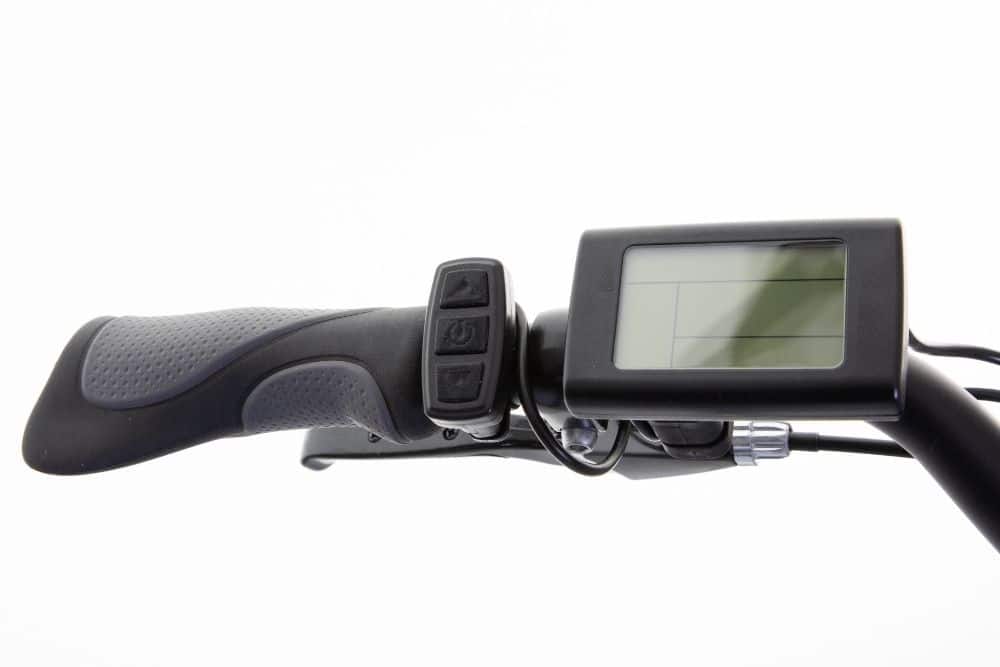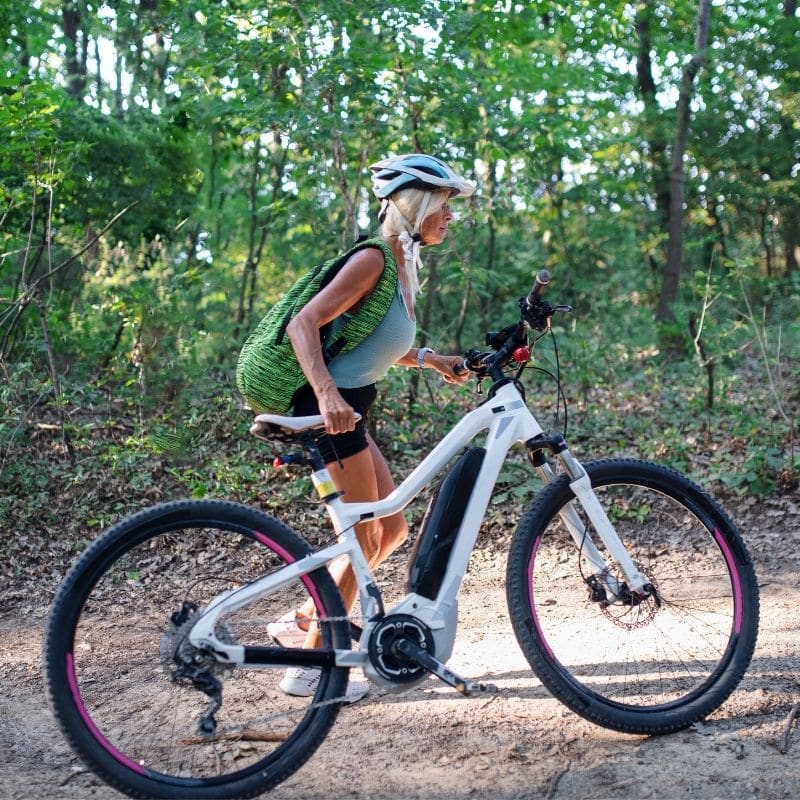An ebike, or electric bike, is a fantastic piece of modern machinery. Ebikes are basically traditional pedal bicycles, but with the addition of an electric motor, a battery to power it, and some ancillary parts like a controller, an LCD display, a cadence sensor, and some wiring. These additions are what powers an ebike so the rider has very little to do in the way of physical exertion.
Although this list of additional parts sounds a lot, in reality, it is very few, and of all the additional parts on the bicycle, only one part, the motor, moves in a constant and regular way. Therefore, there is very little in the way of maintenance to do, in regard to the electric parts. The system is proven and sound, and any failures are a very infrequent event.
Of course, nothing goes on forever, and failures do happen occasionally, but this is usually down to accidental damage to one part or another, rather than an unexpected catastrophic failure of a particular part. Modern Ebikes are built to last.
Ebike Battery Faults
The most susceptible part of an ebike to either direct, or indirect, damage is the battery. The battery usually consists of a pack situated within a tough plastic case attached to the frame of the bike. Some ebikes have the battery pack located within the bicycle frame, which may give it better protection. The battery is a consumable part and will eventually wear out to the stage where it will need replaced, but a good battery pack should last years and work as it was intended to for many recharge cycles.
The battery though, because of its size, weight, and the position it is located on the bicycle frame, is prone to damage of bumps and scrapes by knocks or falls, and can become loose in its bracket by constant removal and reinsertion to recharge it indoors when necessary.
If the battery suddenly fails after a fall or a hard knock, remove it from the bike and check the battery case for damage. Any serious damage may mean having a professional to check for damaged cells inside the casing and replacing such if evident. The battery casing may need replaced in this scenario if the damage is such that the case no longer protects the fragile cells inside from the elements.
If the case seems fine with no apparent damage, then check the terminals on the case and on the case bracket on the frame, and check the cabling from the terminals to ensure none are dirty, or damaged, or have broken away from the connector.
If all looks fine, then connect the battery to the charger and charge it fully. When it shows a full charge, then try it again on the ebike. If the ebike still fails to work, then the fault may lie elsewhere.
As well as being fragile, ebike batteries are also easily affected by extreme hot or cold weather. This can affect how efficient the cells in the battery pack operate. It is wise to charge a battery indoors at a moderate temperature rather than in a freezing cold, or extremely hot, garage or shed.

See also: Ebike Cleaning and Maintenance
And: Ebike Battery Care and Maintenance
Ebike Connections and Wiring Faults
Electrical faults can be difficult to trace and may entail checking the connection on either end of each piece of wiring to ensure it is soundly coupled to its connector, and following the cable along the frame to ensure it has not been cut or damaged or severed due to an accidental knock or fall. Any loose connections should be tightened or resoldered, or new connectors fitted to ensure the electrical connection is sound.
Ebikes are always on the move, over tough terrain sometimes, and suffer shocks and stresses that can easily work a poor electrical connector loose. One loose, or dirty, connector could cause the whole system to fail, so particular care and attention should be taken when periodically checking the wiring on the ebike.
Ebike Motor Faults
Ebike motors are built to require very little in the way of maintenance. Keeping the motor as clean as possible is wise as this helps stop mud or grit working its way into sealed joints and breaking down any protective rubber gaskets over time. Do not use a power washer to clean the motor though. Wiping the dirt off with a wet cloth with some light detergent should be enough.
If the motor suddenly stops working, it is probably a fault with the wiring or the controller, rather than the motor itself. Check the wiring connectors to the motor, and follow the cable to the controller and check the connection there. If no fault is apparent, then you may need to have the controller checked by a professional, in case some internal components have failed and the unit needs replaced.
Noise is another issue that may befall a hub motor. This could be caused by the motor bearings failing, which should be rare unless the motor is a good age and has done a great deal of miles. Check also the brake disc and the pads and ensure all the screws and bolts on everything around the motor is secure and working as it should, in case the noise you think is from the motor may actually be caused by another failing part.
Ebike Handlebar Attachments
On the ebike handlebars you usually have several pieces of kit that together help operate the ebike. Their position on the handlebars makes them fragile not only because they are not as robustly built as some other components, but also because handlebars suffer periodic scrapes and knocks in normal everyday use.
The most fragile part is the LCD display, which in a fall can sustain a screen crack or a break in the casing that may be so severe as to need replacing.

Each brake lever either has a wired built-in motor cut-off switch, or a wired contact and magnet attached to the brake lever casing, which cuts the motor power when the magnet is moved by applying the brakes. Both systems can be easily damaged in a fall or knock. Both systems can be easily repaired or cheaply replaced. If the motor suddenly ceases to operate after a handlebar bump that knocked a brake lever out of position, then check the motor cut-off switch for damage.
As well as the above, on the handlebar you may have a throttle either fitted as a twist-grip, or perhaps a thumb switch. Either can be susceptible to damage by bumps and knocks, and the attached wiring can get caught, or work loose after time. The wiring, if loose, can be reconnected soundly. The throttle is not an expensive part, and can easily be replaced if damaged to the extent it no longer works at all.
Other Electric Bike Parts that May Fail
Some ebikes have magnets fitted, either on a front sprocket, or the back of the pedal crank, that works with a cadence device to inform the controller how fast you are pedalling the ebike, and therefore how much battery power should be released to the motor to power the ebike. These magnets tend to be fragile and can fall or break off and need replaced.
There may be another magnet attached to a spoke which will inform the controller how fast you are going, and therefore cut the power to the motor if you reach the maximum power assist speed. This can also fall or break off and need replaced.
Conclusion
In reality, very few of the faults mentioned above will occur in the life of your ebike. Perhaps you may encounter one or two over a period of years, or none at all, ever. A fault may occur that isn’t mentioned above. The truth is, though, that ebikes are very reliable machines and most faults, when they do happen, tend to be the result of a fall or knock that has caused the damage rather than the part itself failing.
By looking after the battery, using the proper charger, and charging indoors, and by regularly inspecting the connections and wiring, and repairing any damaged parts quickly, you should have a reliable form of transport and a fun ebike to enjoy for a long long time.
Off course, don’t restrict your maintenance to the electrical parts of the ebike. Please maintain every other part, just as you would a traditional bicycle. Especially, frequently check the brakes and the tires.
19 Dec 2021

